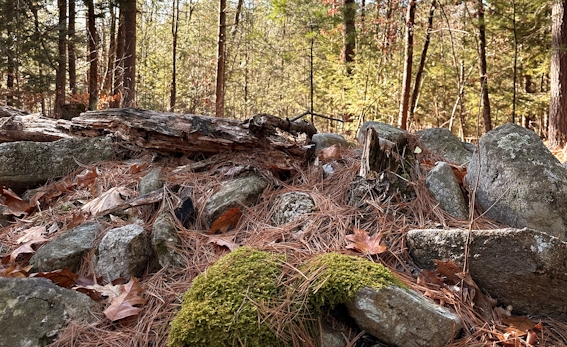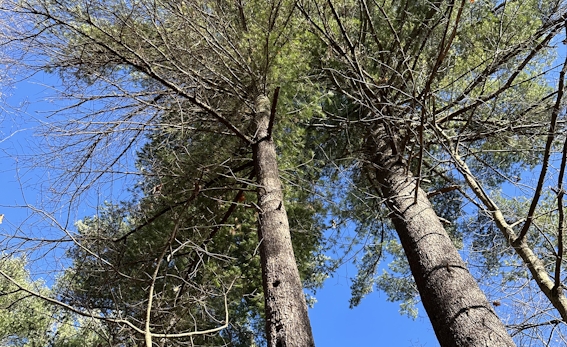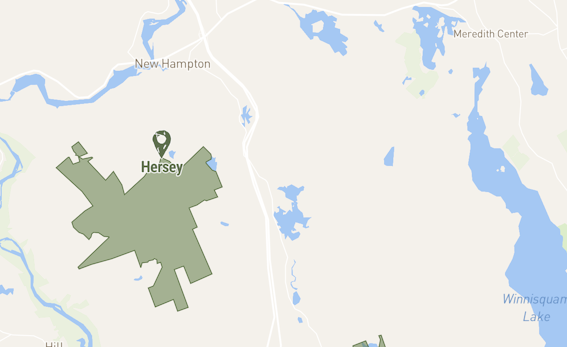Located in the ancestral homeland of the Nipmuc and Pocumtuc peoples

Smith Forest is made up of mostly white pine and oak, hemlock, and mixed hardwoods, and lies next to the Rattlesnake Gutter Trust’s Mosher Conservation Area. The Rattlesnake Gutter Trust also helps to maintain Smith Forest and its recreational trails, including a portion of the old Metacomet and Monadnock (M&M) Trail.
This NEFF Community Forest is particularly significant to the history of forestry in New England, as it was previously owned and managed by long-time Yale School of the Environment professor David M. Smith, author of the touchstone book, The Practice of Silviculture. At the time of Smith’s death in 2009, Yale University called it the most widely used forestry text in the world. Which is to say, Smith Forest likely helped shaped the practice of forest management as we know it today.
Dr. Smith’s daughters donated the forest to NEFF as part of the Pooled Timber Income Fund. Through this giving tool, participants donate their land to NEFF and its timber to a pooled income fund; in turn, donors receive tax benefits and an even stream of lifetime income.
NEFF conserves its Community Forests through ownership, and they are open daily, free to visit, and offer outdoor recreation opportunities. Unlike NEFF’s Community Forests, land protected by NEFF conservation easements—a legal tool—aren’t open to visitors unless their owners explicitly state so, because many belong to private individuals.
NEFF uses easements to conserve land owned by others. When a landowner grants NEFF an easement, it means they have permanently donated or sold to NEFF the landowner’s right to develop their own property, while the landowner otherwise retains ownership of their land; NEFF ensures the easements’ terms are met and enforced.

This Community Forest was donated by Dr. Smith’s daughters, Nancy and Ellen Smith, who inherited the 117-acre property from their father and decided to name it in his honor. Smith was as famous as a forester gets, and was well-known and well-regarded for his decades of work as a forestry educator and for promoting good forestry management in New England. His childhood familiarity with this forestland helped inspire his career choice, and the six decades he spent managing it surely shaped his later work.
The Smith property is close or adjacent to a number of conserved parcels in Leverett. The Mosher Conservation Area and Paul C. Jones Working Forest lie to the north, and the Roaring Brook Conservation Area and the D.H. Banks Sanctuary lie to the south. These areas of conservation create thousands of acres of contiguous forestland.
The Pooled Timber Income Fund (PTIF) is NEFF’s most audacious giving tool. PTIF participants donate their land to NEFF, and the timber on that land is contributed to a pooled income fund. In turn, donors receive an even stream of lifetime income and tax benefits. All donated land receives permanent protection—by joining NEFF’s network of Community Forests—and is managed to NEFF’s Exemplary Forestry standards.
This approach to sustainable forest management balances income generation with the long-term health of forests and the many benefits healthy forests provide, from wildlife habitat to clean air and water. In the case of Smith Forest, this use of Exemplary Forestry also means NEFF is continuing Dr. Smith’s careful forest management.
Because timber is harvested in most years from one or more of the pooled properties, each member of the fund receives a more even stream of funding than by owning their own forestland, and there is a reduced risk from hazards like weather and insects, and reduced risk regarding timber prices due to the greater diversity of timber species and age classes. Learn more about the Pooled Timber Income Fund.
Want to head out and explore? Our interactive map of all NEFF Community Forests will help you get on your way. It provides property-specific trail maps you can download, as well information about each forest’s history, recreational opportunities, natural features, and more.
